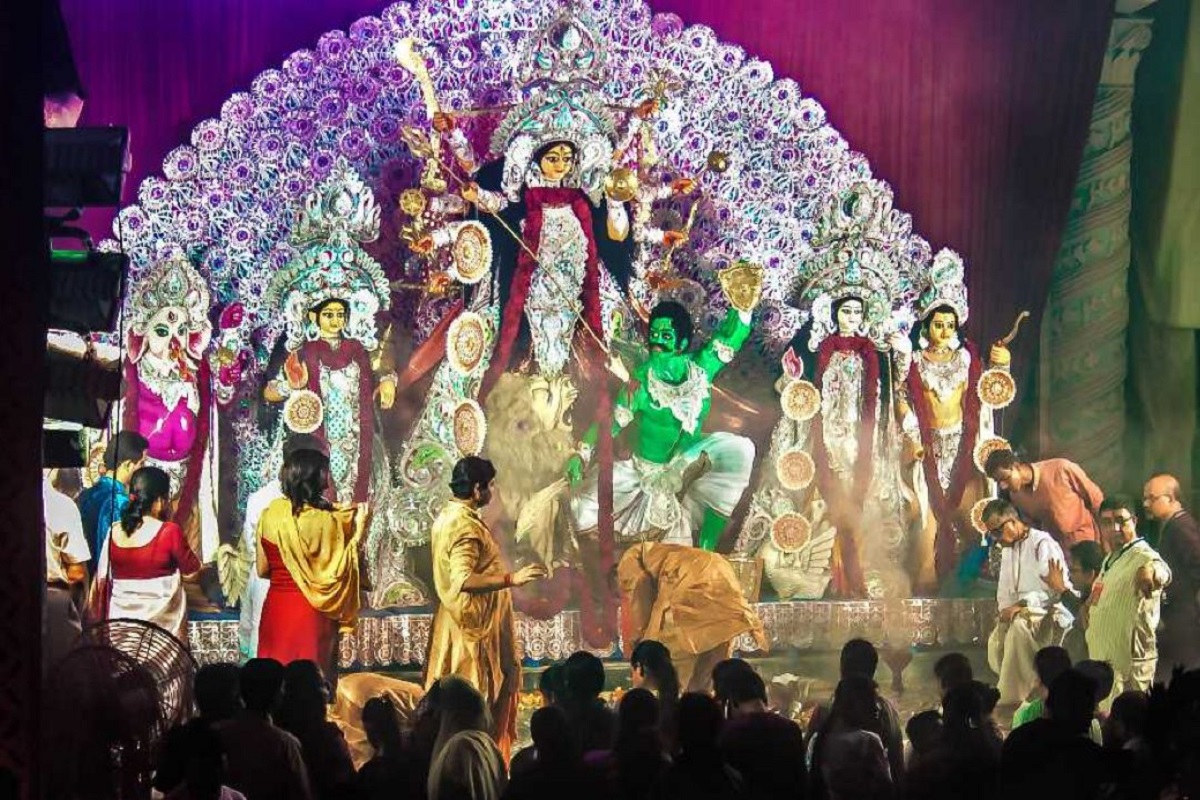Every year when Puja days come, the mind is awash with fond memories of events of earlier years. Amidst the glitz and splendour of modern-day celebrations (pre-pandemic times), the mind yearns for the simplicity and bonhomie of the days gone by.
For us children then, Pujas meant new apparel, scrumptious culinary fare and unlimited merriment. As tiny tots, we took immense pride in flaunting our new acquisitions before our friends and the sheer joy of the whole thing was simply indescribable. One still remembers the unique aroma of the new shirts we wore.
Advertisement
The Puja purchases brought fresh spring into our sprightly legs. Hopping to Puja Pandals with parents for the morning ‘Anjali’ with votive offerings, intoning mantras read out by priests, partaking of the sacred ‘Bhog’, attending cultural programmes in the evenings and on occasions, viewing the latest Bengali blockbusters screened late in the night in the puja enclosures, added to the overall charm and gaiety of the festivities.
‘Anandamela’ was a big draw and one remembers how earnestly we appealed to our parents for an extra rupee, so that we can savour the ‘Patishopto’ (light crepe with sweet stuffing)’, Ghugni’ (pea curry) and other gourmet delights prepared with love and affection by the neighbourhood ladies. Every Puja, we eagerly looked forward to listening to the snatches of newly released Puja records.
At the New Delhi Kali Bari Durga Puja, one waited patiently for the organizers to play the latest numbers of musical legends like Hemant Kumar, Manna Dey, Kishore Kumar, Sandhya Mukherjee and others. The sight of a young versatile Purna Das Baul, the legendary mystic minstrel literally setting the stage on fire with his lively renditions on the Puja night at New Delhi Kali Bari is still fresh in memory.
‘Dashami’ over, we would look forward to visiting the houses of our relatives and acquaintances to savour the mouth-watering traditional dishes prepared with a lot of care and affection by adorable aunts in the neighbourhood. Although people had limited means, there was no dearth of the ‘feel good’ factor and the generosity of heart to treat the guests and visitors to the best of one’s capabilities.
Post-Puja, one remembers the adults penning lengthy letters conveying ‘Bijoya Pronams’ to the elders and love and affection to the younger members. These letters were eagerly awaited, read with immense care and certainly helped in forging a long-lasting sense of bonding in the family. The warmth of feelings thus conveyed can never be replicated in the present era of meaningless whatsapp messages and social media posts.
This fostered the need for respecting the elderly and the seniors, while showering love and affection upon the younger ones. One dreaded the prospect of re-opening of schools after Dussehra and wished that the ten days of festivities would never come to an end.
What started off on a joyous note on ‘Mahalaya’ with the timeless musical epic ‘Mahishasur Mardini’ in the rich baritone voice of Birendra Krishna Bhadra ended on a sorrowful note with the immersion of the idol of the goddess on ‘Vijaya Dashami’ day. There was, however, a reassuring thought that the festivities would come back the following year with the same gaiety and enthusiasm.
(Contributed by Amit Banerjee, Sheikh Manzoor and Deepak Razdan)











